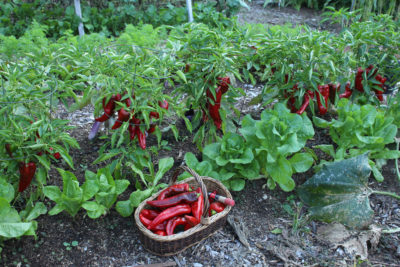SOME REFLECTIONS. . . NOT THAT IT’S OVER
Finish Squash
“Zucchini bread is for people who don’t have compost piles.” That’s what I told Deb after she suggested, first ratatouille, and then zucchini bread, as vehicles for our excess zucchini.
Most years I make an early, too large planting of zucchini (about 6 plants), and then, six to eight weeks later, make another sowing of only a couple of plants. The first planting puts enough zucchinis into the freezer for winter, as well as leaving enough for eating. The second planting is to yield an occasional zucchini for fresh eating through summer after plants of that initial planting have succumbed to squash vine borer, cucumber beetles, bacterial wilt, and any of the other maladies that usually do in the plants a few weeks after they begin bearing. Usually and thankfully do in the plants. But not this year.
Almost every time I check that early planting of zucchini, a new fruit has swelled at the end of a vine now trailing beyond its bed beneath stalks of popcorn in an adjacent bed. I feel no obligation to eat zucchini, whether in zucchini bread, ratatouille, or any other concoction.
Where Are the Insects?
In all my decades of gardening, I’ve never experienced a season with so few insect pests. A few Japanese beetles reared their ugly heads back in July; they were the only ones who showed up, except for an occasional straggler. Likewise for bean beetles. Eggplants hosted the few requisite flea beetles, but never enough for concern. (I did spray a few times with horticultural oil; judging from other gardeners’ flea beetle-less experiences this year, doubt that the effect was from the oil.)
Cabbageworms, always requiring some late summer action on my part in the past in the form of one or two sprays of the biological insecticide Bacillus thurengiensis, have let me occupy that time with other things.
Spotted wing drosophila, known non-affectionately as SWD, showed up, as usual, in sufficient numbers in early August to warrant a spray of spinosad, an extract from a naturally-occuring bacteria found in the soil of a defunct rum factory in the Virgin Islands. That one spray, along with some experimental traps from Cornell, was sufficient to keep the buggers from using my blueberries as nurseries in which to raise their young.
As is so often the case with complex systems, in this case involving the vagaries of this season’s weather, the biology and the chemical and physical make-up of the soil, interactions between garden plants as well as between garden plants and weeds, timing of plantings . . . what I’m trying to say is that I have no idea why the year was so auspicious, as far as insects.
Here Are the Diseases
That was insects. Diseases are another story. Don’t look at my tomato plants.
The tomato plants started the season neatly and decoratively trained as single stems up bamboo poles, soon clothing those poles in lush, green leaves and red or orange tomatoes. Now? Stems are pretty much bare from ground level up a couple of feet, with some shriveled, brown remnants of leaves dangling downwards. The disease is not fusarium or verticillium, to which so many modern tomato varieties are touted for being resistant.
The affliction is leaf spot disease, which is actually one or more of three diseases: early blight, septoria leaf spot, and/or late blight. The worst of the three is late blight, which makes us gardeners and farmers especially nervous after a severe outbreak ravaged a large swath of the Northeast a few years ago. Air currents and humidity have not been favorable this year for late blight to hitchhike up from the South, where it overwinters, and any that might have reached here couldn’t get footholds with this season’s hot, dry weather.
Thorough cleanup of old leaves and stems, which house early blight and septoria leaf spot through the winter, and planting tomatoes where they haven’t been plant for the previous two years, was supposed to keep these diseases in check. Perhaps it did, but not enough.
I have two vegetable gardens, and next year I’ll plant tomatoes in the one that housed no tomatoes for the past couple of years, putting more distance between overwintering disease spores and my plants. Clean up and distance should also quell one other disease, anthracnose, responsible for sunken, rotting areas that develop on some of the fruits.
Diseases notwithstanding, plenty of glass jars filled either with sparkling red, canned tomatoes and dull red, dried tomatoes line shelves to bring some essence of summer into through the dark months ahead.
Pepper Heaven
Tomatoes may be the essence of summer for their ubiquity in gardens; for me, though, ripe, red peppers more represent a summery flavor. My peppers rarely experience insect or disease problems. The challenge, this far north, is ripe, red peppers in abundance.

Italian Sweet peppers
My favorite variety for flavor, earliness, and productivity, especially this far north, is Italian Sweet. I put in many plants this past spring, and the harvest is prolific.
Unfortunately, dried or frozen peppers offer only wan hints of the fresh peppers’ summery flavor and texture.

